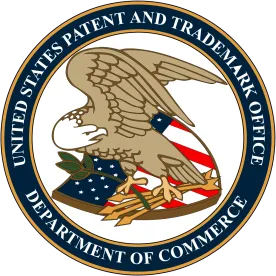On February 4, 2021 the U.S. Patent and Trademark Office (USPTO) extended for two years the expansion of the Collaborative Search Pilot Program (CSP), which began in 2015 and is now scheduled to end October 31, 2022. The CSP expedites prosecution of related applications at the USPTO and the Japanese Patent Office (JPO) or Korean Intellectual Property Office (KIPO) by allowing the offices to conduct and share prior art searches before issuing a first action. Earlier articles from Mintz explored the original CSP and the CSP’s first expansion. The new expanded CSP is still free and continues the USPTO’s drive for patent quality and speedy examination.
Upon acceptance into the CSP at the USPTO and at the JPO or KIPO, each office conducts a prior art search, shares the search results with each other, prepares an office action, shares the office actions with each other, and then mails an office action to the patent applicant. The USPTO includes prior art located by the JPO/KIPO in a Notice of References Cited (form 892), so the CSP will not increase an applicant’s information disclosure statement (IDS) burden and will help ensure that prior art identified by the JPO/KIPO is considered before the USPTO issues a first action. The USPTO will typically mail office actions faster under the CSP because acceptance into the program confers special application status with search results shared between offices within 4 months. Unlike the original CSP, participation in the First Action Interview program is not required.
To file a request for the CSP at the USPTO for a non-reissue, non-provisional patent application, an applicant must:
- Have a co-pending related application at the JPO or KIPO that has independent claims corresponding to the U.S. independent claims, with each of the co-pending related applications being unexamined.
- File a Petition to Make Special Under the Expanded CSP (form 437), along with all required documents, via EFS-Web before examination has commenced.
- Complete the petition’s claims correspondence table that establishes “substantial corresponding scope” of at least the independent claims in the co-pending applications.
- Have satisfied all USPTO filing requirements as of the petition’s filing date so as to be eligible to receive a filing receipt.
- File a petition at the KIPO or JPO within 15 days of the USPTO petition filing.
- Have claims directed to a single invention (an examiner may ask for an election by telephone without removing CSP eligibility).
- No more than 3 independent claims and 20 claims total, with no multiple dependent claims (preliminary amendment filing is permissible).
- Provide English translation of non-public non-English corresponding claims (machine translation is acceptable).
- Be subject to AIA requirements by having an earliest filing date after March 16, 2013.
The CSP is similarly available between the USPTO and KIPO for plant applications.
The USPTO recommends contacting the examiner if participation in the CSP is desired for a patent application and the application has already been assigned to an examiner. This contact will help ensure that a CSP petition is not filed after the examiner has started examining the application.
USPTO statistics for the original CSP indicate that “all offices contributed relevant prior art to the prosecution history – with the result being a significant reduction in prosecution time and that very few applications needed a Request for Continued Examination (RCE) to complete prosecution – with over a 90% allowance rate.” The USPTO states that the CSP expansion “builds on these successes and continues to improve compact prosecution and enhance patent quality.”
Up to 400 applications will be accepted in the program per year per participating office. The CSP is widely available at least as 2021 begins, with the USPTO reporting that “[a]s of February 4, 2021, greater than 75% of the slots are available for both JPO and KIPO.”
This month’s Federal Register notice of the expanded CSP provides more details about the program’s requirements. Further information about the expanded CSP can be found at the USPTO’s CSP website.




 />i
/>i

